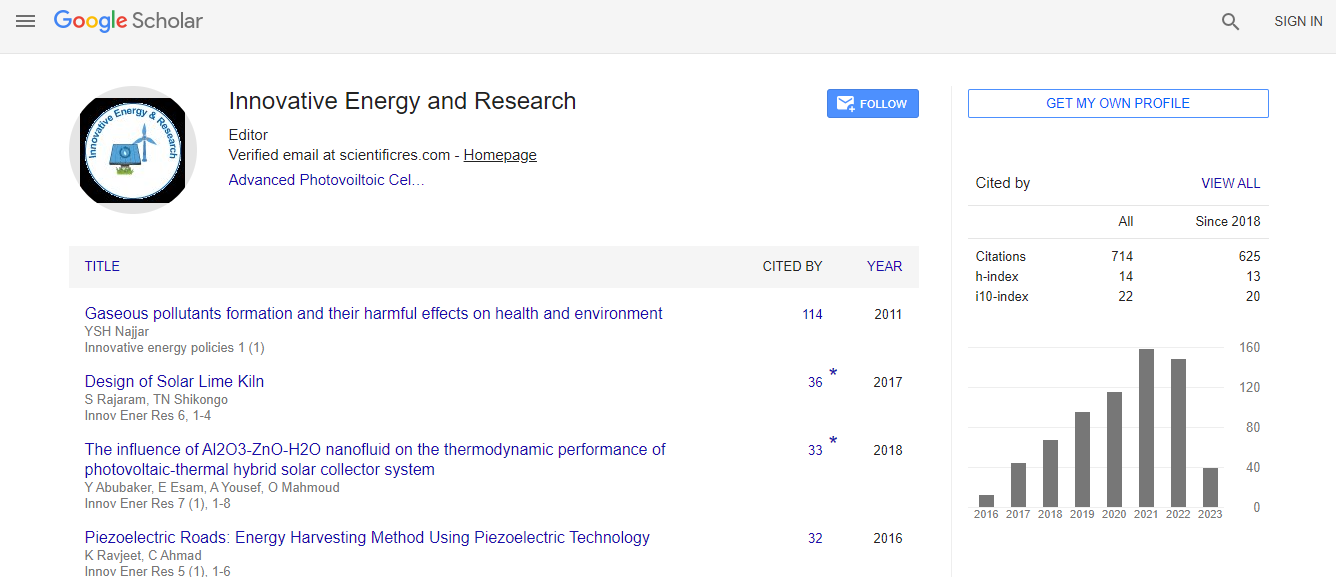Our Group organises 3000+ Global Conferenceseries Events every year across USA, Europe & Asia with support from 1000 more scientific Societies and Publishes 700+ Open Access Journals which contains over 50000 eminent personalities, reputed scientists as editorial board members.
Open Access Journals gaining more Readers and Citations
700 Journals and 15,000,000 Readers Each Journal is getting 25,000+ Readers
Google Scholar citation report
Citations : 712
Innovative Energy & Research received 712 citations as per Google Scholar report
Innovative Energy & Research peer review process verified at publons
Indexed In
- Google Scholar
- Open J Gate
- Genamics JournalSeek
- RefSeek
- Hamdard University
- EBSCO A-Z
- Publons
- Euro Pub
- ICMJE
Useful Links
Recommended Journals
Related Subjects
Share This Page
Novel heterostructured nanoporous silicon (HNPS) anode for lithium ion battery: Economic prudence, system demonstration and first principle insights
21st International Conference on Advanced Energy Materials and Research
Anil Pathak, Kousik Samanta, Animesh Mandal, Kisor K Sahu and Shoobhankar Pati
Indian Institute of Technology Bhubaneswar, India
Posters & Accepted Abstracts: Innov Ener Res
Abstract
Ultra-mobile modern day lifestyle is critically powered by lithium ion battery (LIB). Since its discovery, it has come a long way to revolutionize our society and redefine our civilization. It also has huge role to play in replacing gasoline powered cars by electric cars and thereby reduce carbon foot print significantly and address a very serious global concern. At this point, one can embark onto a completely new set of technology, for example, a metalair battery, which holds tremendous future potential but comes with serious technical challenges. However, it will be more prudent both technically and economically to realize the full theoretical potential of LIB (we are nowhere close there yet), before we change the bandwagon. Let us illustrate: pure lithium thus far could not be used as cathode in LIB and silicon, which has long been predicted to be the best element as anode material, from a pool of candidate elements spanning the entire periodic table, could not be used. Each silicon atom can theoretically hold on up to four lithium atoms in contrast to 1/6th in case of graphite, another commercially popular anode material. In this study, we focus on anode and demonstrate that how the major problems in realization of silicon anode (volume expansion and kinetic sluggishness) can be resolved by using our novel heterostructured nanoporous silicon (HNPS). We will discuss the protocol to obtain this novel HNPS from a low grade source material and compliment the understanding by first principal studies proving both thermodynamic and kinetic insights. We demonstrate lithium ion half-cell performance using HNPS. We further demonstrate the economic prudence (cost reduction by an order of magnitude) in adopting this technology commercially by comparing to a latest-model Tesla® car as a reference point.Biography
E-mail: anilpathak968@gmail.com

 Spanish
Spanish  Chinese
Chinese  Russian
Russian  German
German  French
French  Japanese
Japanese  Portuguese
Portuguese  Hindi
Hindi 
